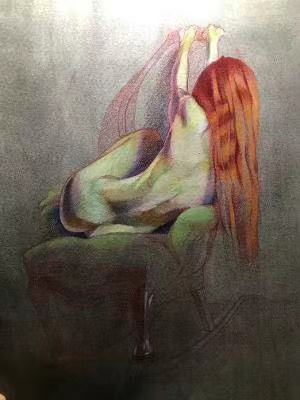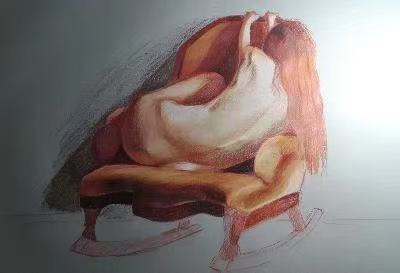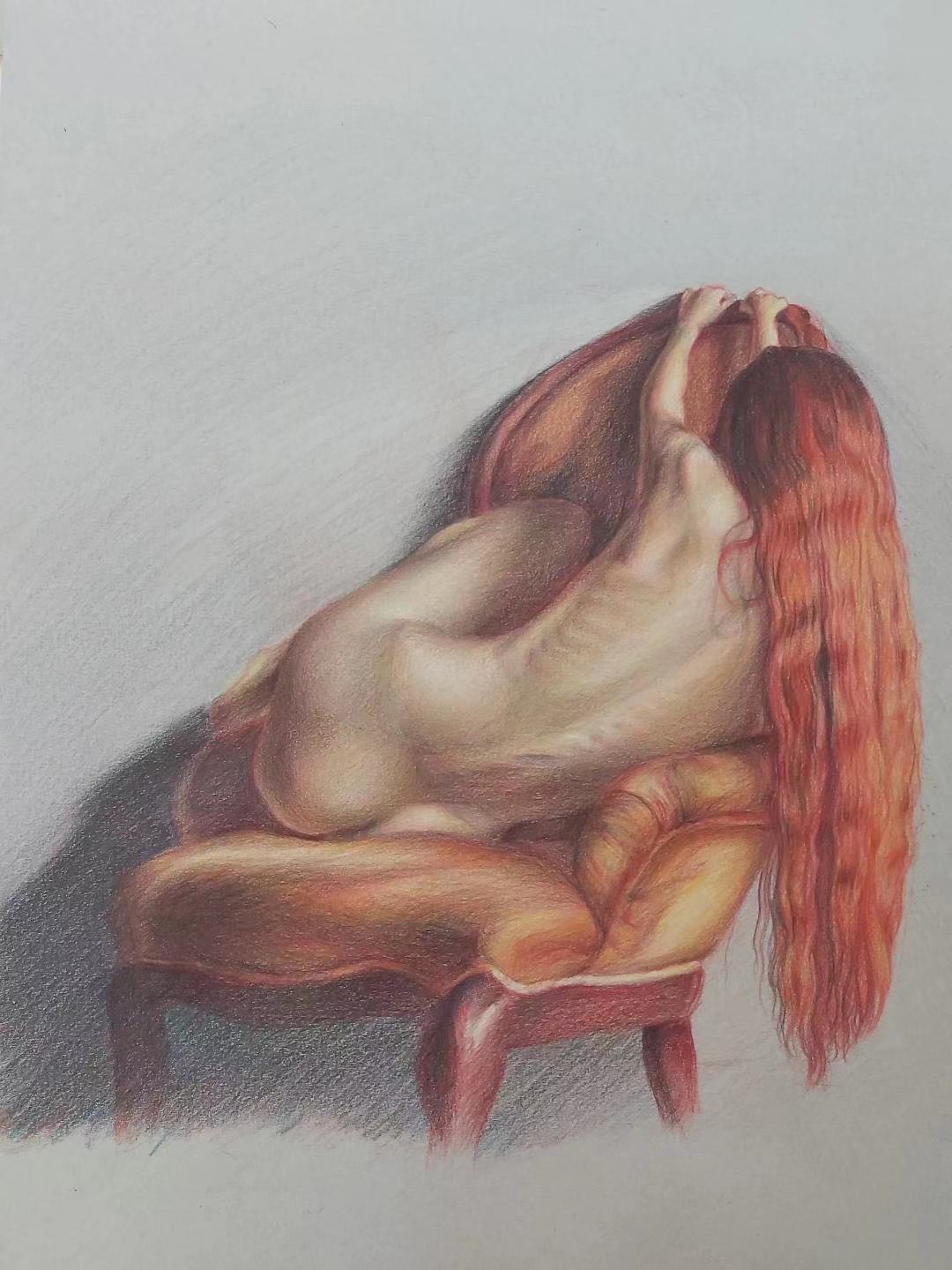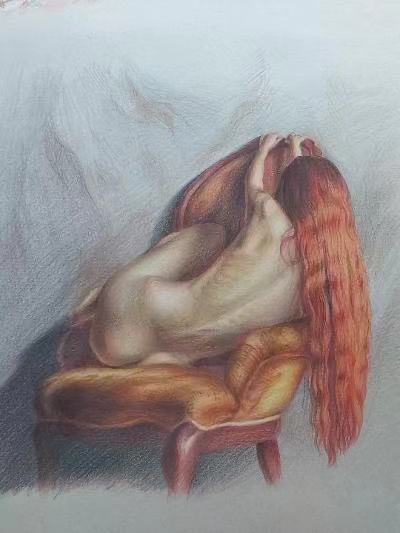|
Verdaccio is an Italian name for the mixture of black, white, and yellow ochre pigments. The result is a grayish or yellowish grey. Verdaccio became an integral part of fresco painting, in which this color is used for defining tonal values, forming a complete monochromatic underpainting. Often architectural details in frescoes are left in verdaccio without any additional color layers; a notable example is the ceiling of the Sistine Chapel, where verdaccio underpainting can be clearly seen left on, as it is on all architectural details of the composition. In oil painting, a similar technique is used by Flemish painters, referred to as the "dead layer," is applied over the traditional bone color (one-part raw umber to one-part yellow ochre) priming to refine the values and remove the warm tone of the primer. The resulting "white to olive green to black" underpainting is "like being illuminated by moonlight." It does not affect the tonality of the final painting.  Here, we see WCAAD students at different stages in their drawings adapting this technique with color pencils and a grey toned paper. As the drawings progress the skin slowly becomes translucent and illuminated. Life Drawing is open to all who are seeking a stronger foundation and experimentation with materials and techniques Friday’s 4:00-7:00 Saturday’s 3:30-6:30 AuthorOmar Gallegos Vice Principal and Director of Education of
0 Comments
Leave a Reply. |
Archives
July 2024
|
Campus420 S Pine St, San Gabriel, CA 91776
|
Office HoursMon-Fri: 11:00 AM - 7:00 PM
Sat-Sun: 8:30 AM - 7:00 PM Summer Schedule Mon-Sun: 8:00 AM-7:00 PM |
Copyright © 2024 MyArtEducation.com
West California Academy of Art and Design. All Rights Reserved.
West California Academy of Art and Design. All Rights Reserved.



